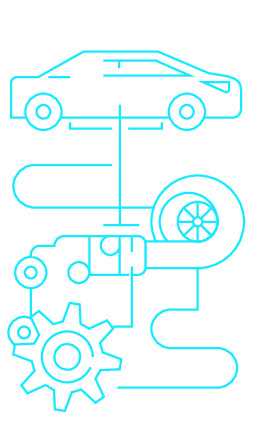|
|
|
| Module code: FT54 |
|
|
3V (3 hours per week) |
|
3 |
| Semester: 6 |
| Mandatory course: no |
Language of instruction:
German |
Assessment:
Oral examination
[updated 30.09.2020]
|
FT54 (P241-0300, P241-0305) Automotive Engineering, Bachelor, ASPO 01.10.2011
, semester 6, optional course, course inactive since 14.02.2025
FT54 (P241-0300, P241-0305) Automotive Engineering, Bachelor, ASPO 01.10.2015
, semester 6, optional course, course inactive since 27.07.2017
FT54 (P241-0300, P241-0305) Automotive Engineering, Bachelor, ASPO 01.04.2016
, semester 6, optional course
FT54 (P241-0300, P241-0305) Automotive Engineering, Bachelor, ASPO 01.10.2019
, semester 6, optional course
MAB.4.2.4.14 (P241-0305) Mechanical and Process Engineering, Bachelor, ASPO 01.10.2013
, optional course, specialisation
|
45 class hours (= 33.75 clock hours) over a 15-week period.
The total student study time is 90 hours (equivalent to 3 ECTS credits).
There are therefore 56.25 hours available for class preparation and follow-up work and exam preparation.
|
Recommended prerequisites (modules):
None.
|
Recommended as prerequisite for:
|
Module coordinator:
Prof. Dr.-Ing. Rüdiger Tiemann |
Lecturer:
Prof. Dr.-Ing. Rüdiger Tiemann
Dipl.-Ing. (FH) Bernd Neitzel
[updated 27.07.2017]
|
Learning outcomes:
Students will receive an overview of brake designs, their components and functions. After successfully completing this course, students will be able to design and develop brake systems of vehicles. They will be familiar with the design of electronically controlled hydraulic brake systems (ABS, ASR and ESP) and the principles of their control algorithms. They will be able to understand, explain and technically evaluate these braking systems.
[updated 30.09.2020]
|
Module content:
1. The physics of braking
2. Types of wheel brakes
3. Brake actuation
4. Brake force distribution
5. Brake force control
6. Electronically controlled braking and driving dynamics systems
[updated 30.09.2020]
|
Teaching methods/Media:
Lecture, presentation with video projector, lecture notes
[updated 30.09.2020]
|
Recommended or required reading:
Self-made lecture notes
Breuer/Bill (Hrsg.): Bremsenhandbuch ISBN 3-528-03952-3
[updated 30.09.2020]
|


